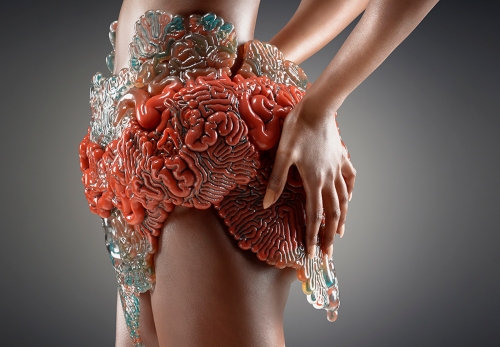For Quartz, Amanda Shendruk and Marc Bain analyzed skin tones that appeared in beauty and fashion ads on Instagram. The graphics use Blackout Tuesday on June 2, 2020, when many brands vowed to improve diversity to better reflect the world, as a point of comparison. Using median skin color as the main metric, some companies shifted more than others.
Category Archives: fashion
Fashion runway color palette
We came together with The Business of Fashion to view their collection of 140,000 photos of runway looks from almost 4,000 fashion shows around the world. If you could attend one fashion show per day, it would take you more than 10 years to see them all. This experiment makes this library easy and fun to explore in one single visualization. By extracting the main colors of each look, we used machine learning to organize the images by color palette, resulting in an interactive experiment of four years of fashion by almost 1,000 designers.
The interactive lets you see all of the color palettes and click through to see photos that match the palette.
You can also upload an image to fetch fashions that match the color usage in the image. So in case you want to match your wardrobe to say, your dog’s fur, that’s totally doable now. Nice.
Tags: color, fashion, Google, The Business of Fashion
Posted by in color, fashion, Google, Statistical Visualization, The Business of Fashion
Fashion trends seen through Google searches
Fashion trends, such as skinny jeans and Palazzo pants, can spike and fall quickly year over year, and it can be tough to keep up. Maybe trends in Google searches for specific fashions can help. Hiroko Tabuchi and Josh Katz for the New York Times mapped a handful of fashion searches over time so you can see some of the regional changes.
The above is the view for Tulle skirts (kind of like a ballerina skirt). The trend starts out spotty in various regions across the country and then seems to hit a tipping point around September 2014.
This is based on Google's recent trends report, but unfortunately the data is in-house, so we don't get to play.
Disclaimer: I know nothing about fashion, unless you count the hoodie, t-shirt, and jeans mix-and-match game, in which case I'm an expert. However, I am told this does not count.
Tags: fashion, Google, New York Times
Posted by in fashion, Google, Mapping, New York Times
The Art of Science: Biologically-Enhanced Fashion
This is the Björkiest thing I have ever seen. Wanderers, a collaborative project to create digitally grown and 3d printed wearables that could embed living matter, looks like a perfect fit for the Icelandic chanteuse, who is famous for her biophilia and wildly adventurous fashion sense.
A team led by Neri Oxman of MIT and Christoph Bader & Dominik Kolb of Deskriptiv is working on a computational growth process which can mimic a wide variety of growing structures. Based on growth patterns found in nature, computer models create shapes that adapt to their environment. Once a design is generated, a 3D printer creates a wearable structure.
Filip Visnjic at Creative Applications Network explains: “Starting with a seed, the process simulates growth by continuously expanding and refining its shape. The wearables are designed to interact with a specific environment characteristic of their destination and generate sufficient quantities of biomass, water, air and light necessary for sustaining life: some photosynthesize converting daylight into energy, others bio-mineralize to strengthen and augment human bone, and some fluoresce to light the way in pitch darkness.”
In the long term, the team hopes to produce 3D printed microfluidic devices through which to pump living matter (such as photosynthetic bacteria) to bring the Wanderers to life. In the short term, they’ve created an amazingly hypnotic video showing how the computer simulates growth patterns (watch it here) and some stunning molded plastic breastplates and even a skirt. The pieces, which look a lot like glistening external brains and intestines, are more attractive than I’m making them sound. And sure, they’re wearable – if you’re Björk.
More photos and information about the Wanderers project are here.
Filed under: The Art of Science Tagged: 3D Printing, Bjork, Christoph Bader, Creative Applications Network, Deskriptiv, Dominik Kolb, fashion, Filip Visnjic, MIT, Neri Oxman, sciart, The Wanderers
Happy hikers pass in front of Table Mountain in Washington,…

Happy hikers pass in front of Table Mountain in Washington, April 1960.Photograph by B. Anthony Stewart, National Geographic
Happy hikers pass in front of Table Mountain in Washington,…

Happy hikers pass in front of Table Mountain in Washington, April 1960.Photograph by B. Anthony Stewart, National Geographic
A woman wears a dress adorned with fish scales in…

A woman wears a dress adorned with fish scales in 1921.Photograph by Kadel & Herbert



